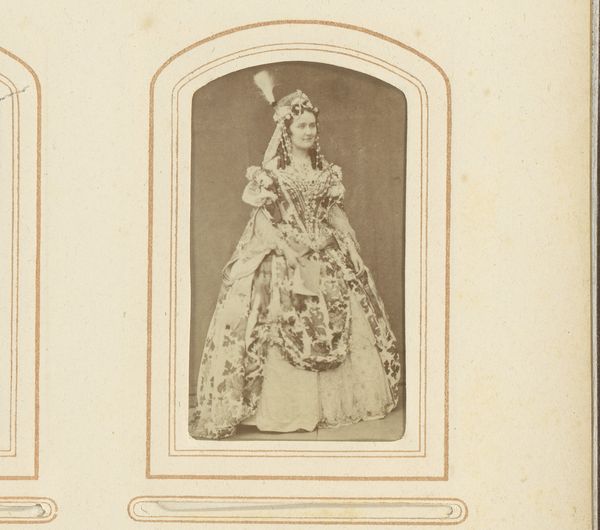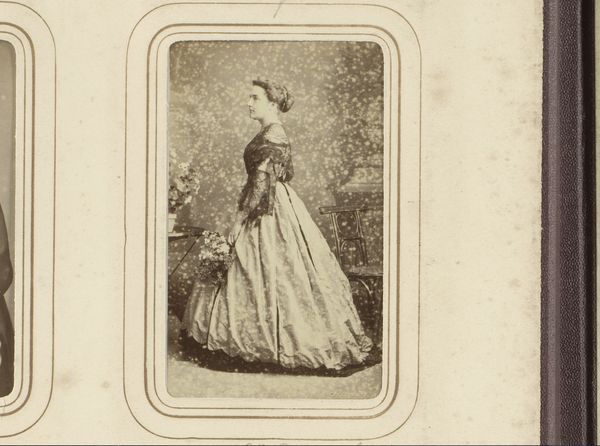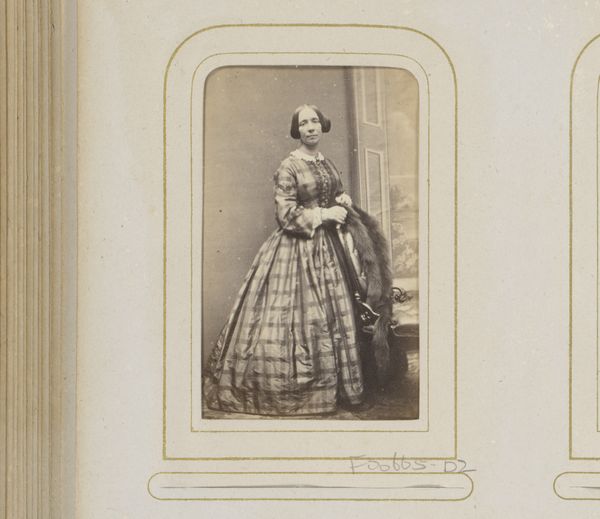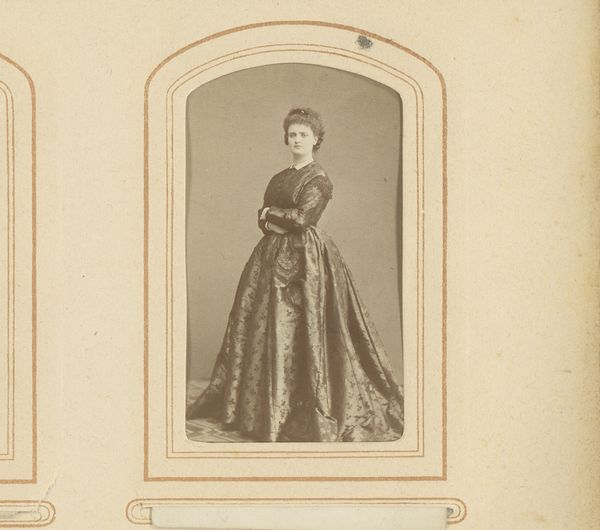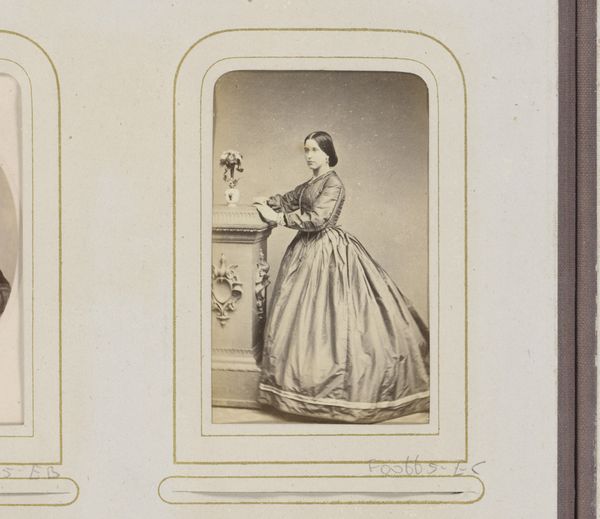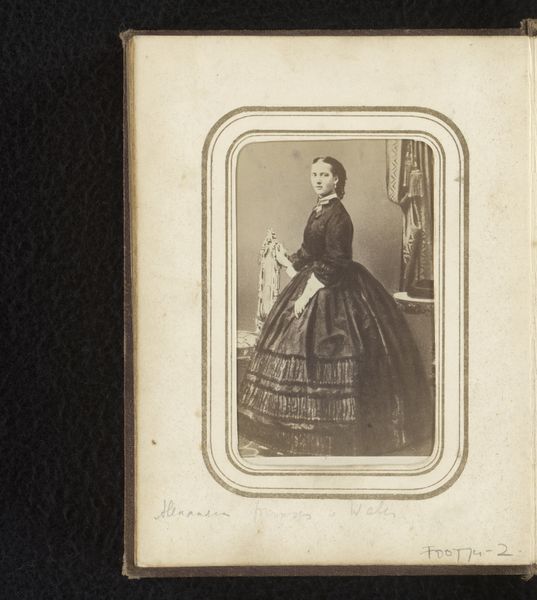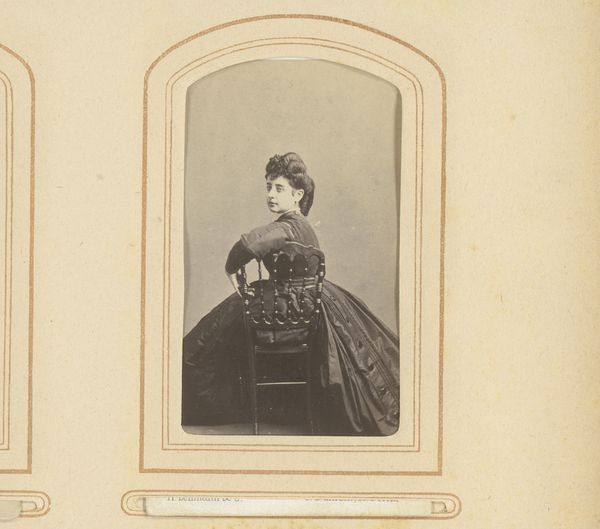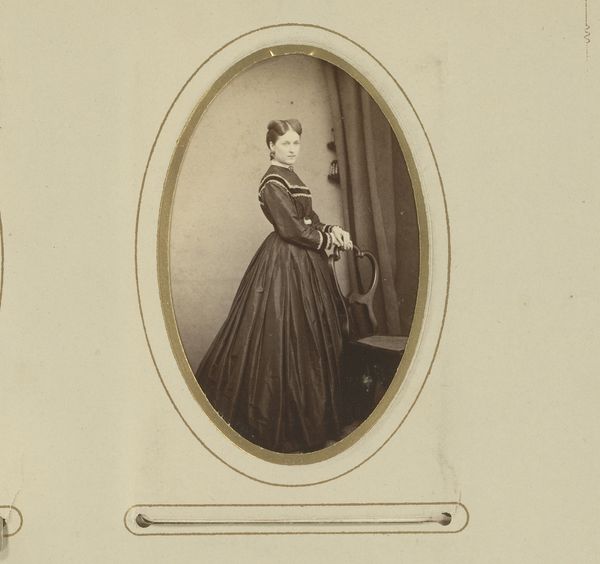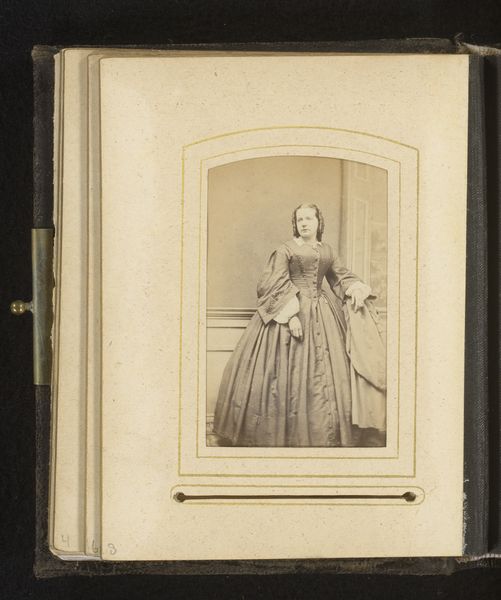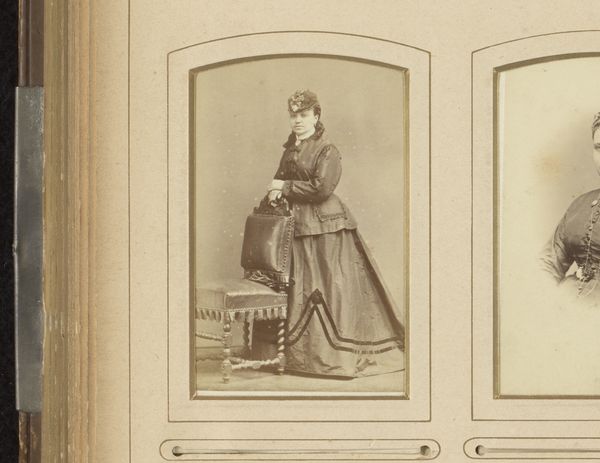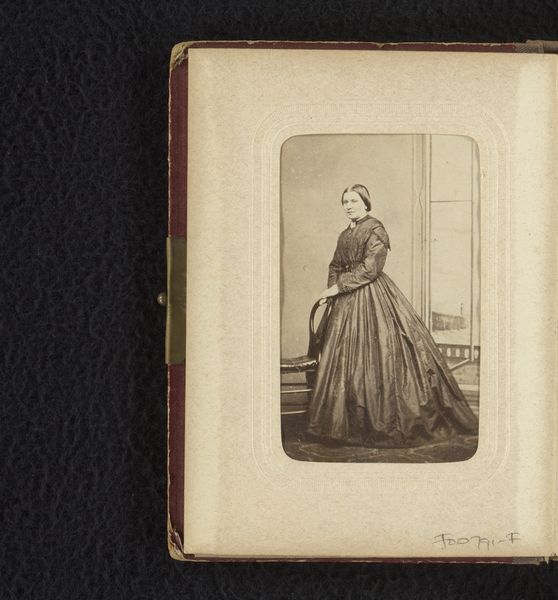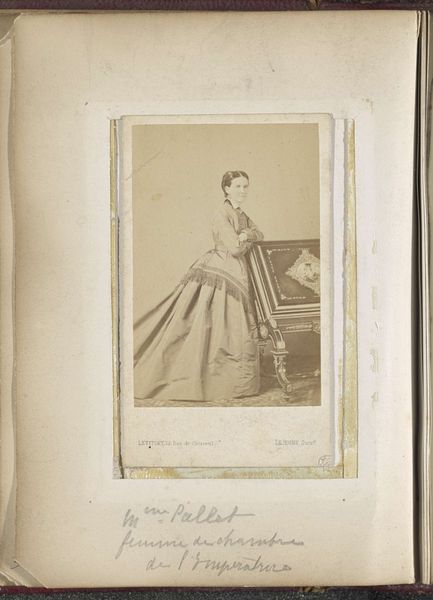
photography, albumen-print
#
portrait
#
sculpture
#
charcoal drawing
#
photography
#
19th century
#
albumen-print
Dimensions: height 82 mm, width 50 mm
Copyright: Rijks Museum: Open Domain
This photographic portrait was created by Maull & Polyblank, using a process called Albumen print. This technique involves coating paper with a layer of egg white and silver nitrate, making it sensitive to light. The negative is then placed on the prepared paper and exposed to sunlight, creating a detailed image. The tones of the image, ranging from warm browns to purplish blacks, are all down to the chemical reaction of the photographic process. Albumen prints were incredibly popular in the 19th century because of their crisp detail and relative ease of production which made it perfect for the rise of the middle class. Photography democratized portraiture, previously only for the aristocracy who could afford to commission a painting. In this regard, photography was as much an industrial process as an artistic one. Looking closely at photographic prints reminds us of the fusion of science, industry, and artistry inherent, which redefines our conventional definitions of art and craft.
Comments
No comments
Be the first to comment and join the conversation on the ultimate creative platform.
